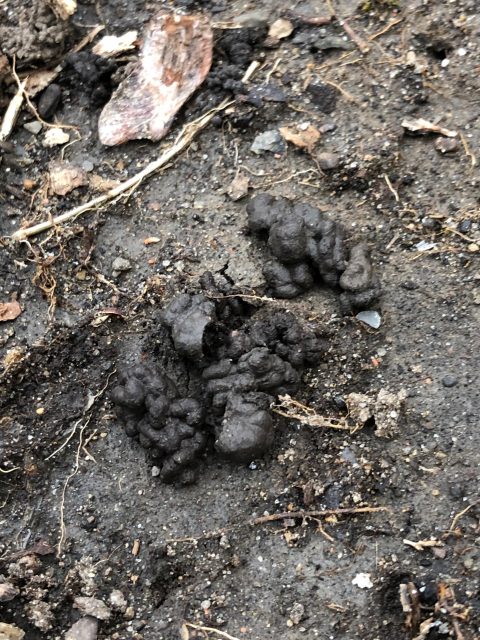1000’s of Worm Castings Found on Dawson Grounds

With warming soils and no foot traffic on the lawns of Dawson, thousands of small 1-2 cm raised “hills” of earth can be spotted everywhere. This is evidence of earthworms, introduced from Europe hundreds of years ago, that have been eating rotting vegetation like grass and leaves. They pass the vegetation and pieces of soil through their digestive tract and deposit their waste, or “castings”, on the surface. The photo taken at Dawson on April nineth shows three worm castings. Because worm castings are rich in organic matter and soil particles, they fertilize garden soil and are actually sold commercially as garden fertilizer.
How did earthworms get to Quebec?
Common earthworms such as nightcrawlers & red wrigglers commonly seen in our yards were simply not present in our region since the last ice-age thousands of years ago. Earthworms were introduced by early settlers from Europe in plants they brought here on ships or in ship ballasts. When the plants and soil ballasts were emptied on the shores on the St. Lawrence river, the worms found plenty of food.
Earthworms – both good and bad…
The presence of earthworms can be both beneficial and non-beneficial, depending on where they are located. For example, on Dawson grounds and gardens, they are keeping areas continuously walked on from getting too compact with their tunneling and they are eating many kilograms of dead leaves and grass daily. This activity provides aerated soil, good drainage and keeps nutrients cycled on the property. On the other hand, these introduced species are now eating through a thick carpet of organic matter, the forest floor, at an alarming rate. Our Northern forests evolved without these worm species so studies continue to document the impact on invertebrates and fungi that live in association with tree roots within the forest floor. The ability of this layer to both hold water and protect the forest root system from high temperatures is also important with the North warming due to climate change. With a manicured grass lawn at Dawson and the removal of fallen leaves each year, a forest floor does not develop.
Tons of soil moved
Each worm can eat about half its own weight in food per day. The amount of earth moved by worms on the College grounds would equal many tons each growing season. They are literally providing Dawson with enriched soil every night as they surface and leave their mark by the thousands!

